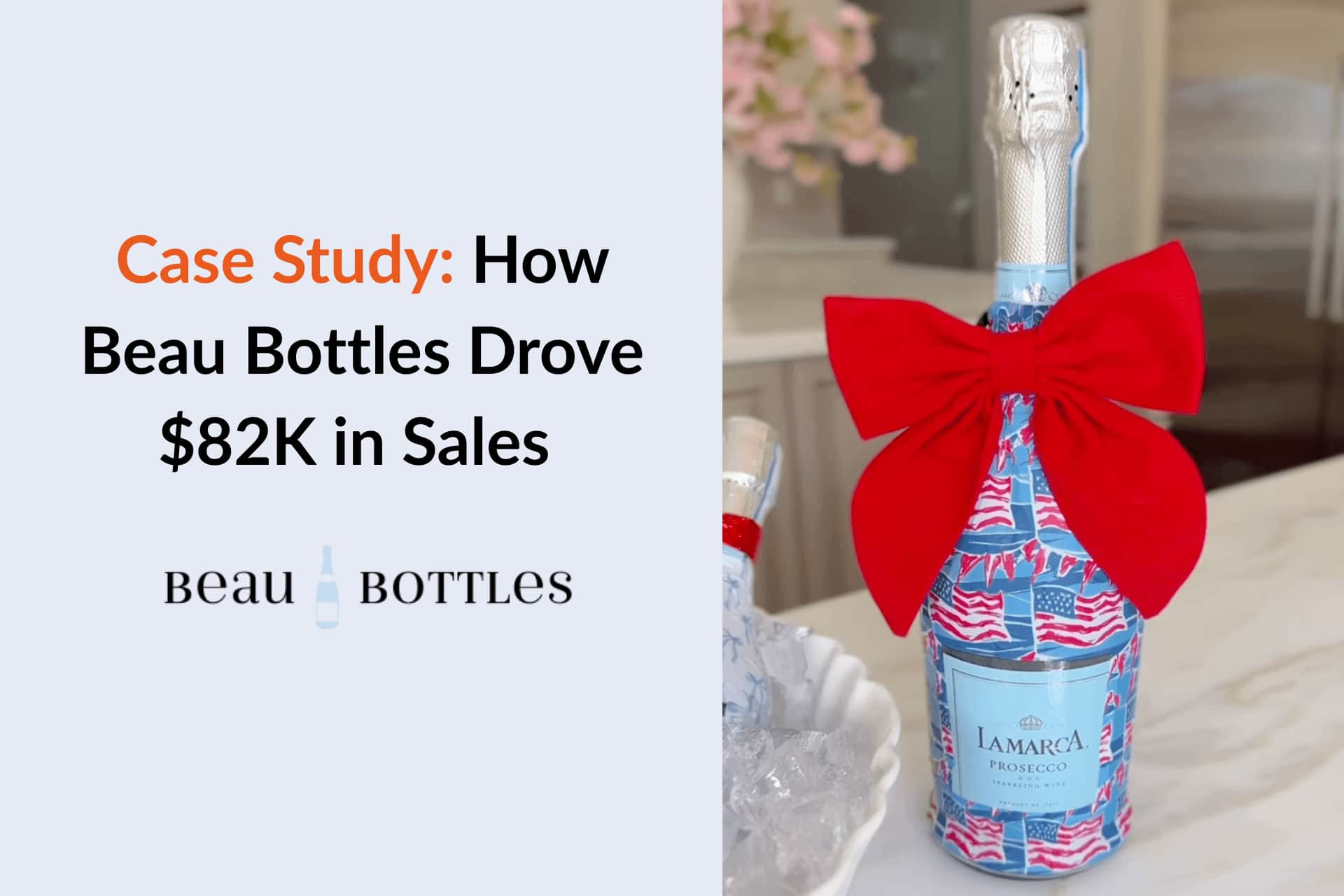





Partnerize has been a popular choice for brands looking to manage their affiliate and influencer marketing programs, but many users are now exploring alternatives. Some of the common complaints about Partnerize include its high pricing, which can be prohibitive for smaller businesses; limited reporting capabilities, making it difficult for brands to track and optimize campaign performance effectively; and lack of flexible integrations, preventing seamless use with various e-commerce and marketing tools.
These factors have led many businesses to seek more cost-effective, user-friendly, and feature-rich solutions that offer better performance tracking and easier integrations with existing workflows.
Here are the top 10 alternatives we’ll explore in this article:
Partnerize has been a significant player in the affiliate marketing space, but many users have expressed concerns that are prompting them to seek alternatives. Common issues highlighted include:
Users often find Partnerize's pricing structure opaque and challenging to navigate, with no clear pricing tiers or upfront costs. This lack of transparency can lead to unexpected expenses, especially for small to mid-sized businesses with limited budgets.
Many users have reported that Partnerize's platform is not intuitive, with a steep learning curve and a cluttered interface. This complexity can hinder teams from quickly adopting the platform and effectively utilizing its features.
Partnerize's integration options are often seen as limited, making it challenging for businesses to connect the platform seamlessly with other tools and systems they use, such as CRM or e-commerce platforms.
Feedback indicates that Partnerize's customer support may not be as responsive or helpful as needed, leading to delays in resolving issues and a less satisfactory user experience.
Our comparison focuses on several key aspects:
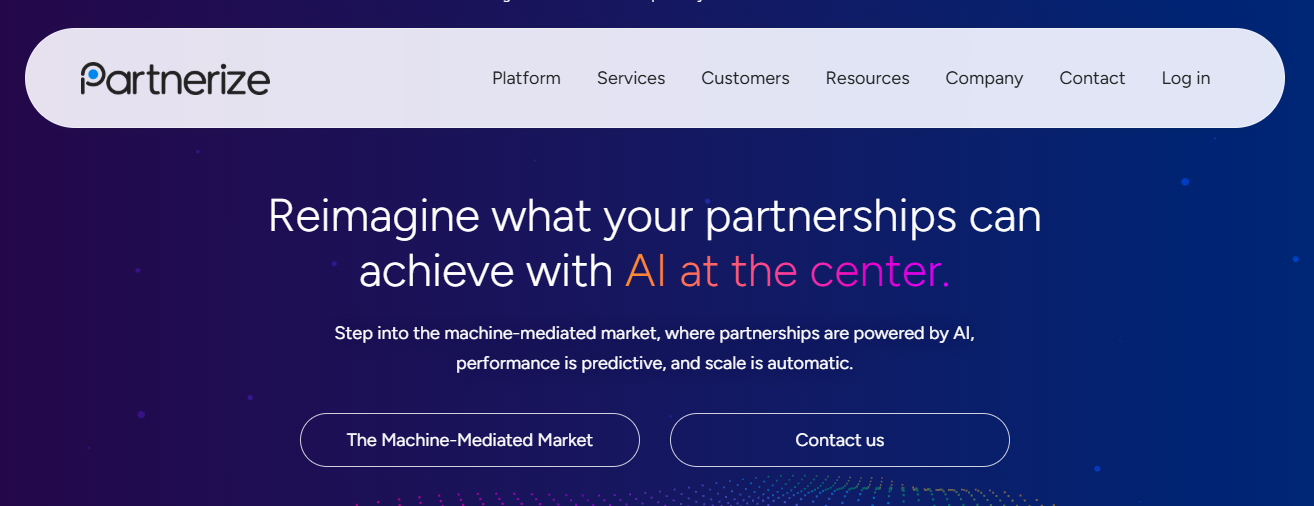
Best For: Partnerize is best for large eCommerce brands and enterprises looking to scale influencer, affiliate, and partner marketing campaigns across multiple regions and currencies.
Platform Coverage:
Pricing: Based on our research, Partnerize does not publicly list fixed pricing tiers. The cost depends on the business size, scope, number of partners, regions, and other factors. Starting Price: Approximately $2,000/month (for many brands, exact costs vary).
Reviews: 4.3 / 5.0 (G2)
Ease of Use (UX/UI): Users often note that Partnerize offers a powerful and feature-rich platform, but the interface and setup can be overwhelming, especially for smaller businesses. Many users find the dashboards and features difficult to navigate until they are familiar with the platform. However, once set up, users appreciate the control and customization it offers.
Customer Support: Partnerize’s customer support is highly rated, especially for large brands. Users mention the responsive account management and the company's ability to help with complex setups. Onboarding is considered well-structured, particularly for enterprise clients, although some smaller brands might find it more resource-intensive.

Best For: Influencer Hero is best for growing D2C brands and eCommerce teams focused on scaling influencer marketing campaigns with deep insights, multi-platform support, and automated tools.
Platform Coverage:
Pricing: Influencer Hero offers flexible pricing plans to accommodate growing brands. All plans include core features and can scale as the influencer program grows.
Reviews: 5.0 / 5.0 (Capterra)
Ease of Use (UX/UI): Influencer Hero is known for its intuitive design and user-friendly interface, featuring a streamlined dashboard, automated workflows, and customizable email templates. The platform’s simplicity makes it easy for users to manage large-scale campaigns without a steep learning curve.
Customer Support: Influencer Hero provides excellent customer support, offering 24/7 real-human live chat, responsive email support, and an extensive Help Center filled with written and video tutorials. Every plan includes a dedicated account manager from day one, with optional strategy consultations available to guide growth. Pro plan users can also access a private Slack channel for quicker, continuous support.
Partnerize is known for a custom pricing model based on performance or volume, starting around $2,000 per month. This pricing can be a challenge for smaller brands or those with more limited budgets. In contrast, Influencer Hero offers more flexible pricing plans starting at $649 per month, making it a more accessible choice for businesses at various stages of growth.
Partnerize excels at managing a wide range of partners, including influencers, affiliates, and coupon partners, with strong tools for tracking and reporting. However, its complexity and steep learning curve can be overwhelming for smaller businesses. Influencer Hero stands out with its user-friendly design, AI-powered features, and multi-platform support, providing a comprehensive solution for scaling influencer marketing campaigns across different social networks and eCommerce platforms.
Influencer Hero's automated workflows and personalized outreach further streamline campaign management, which makes it a more efficient solution for growing brands.
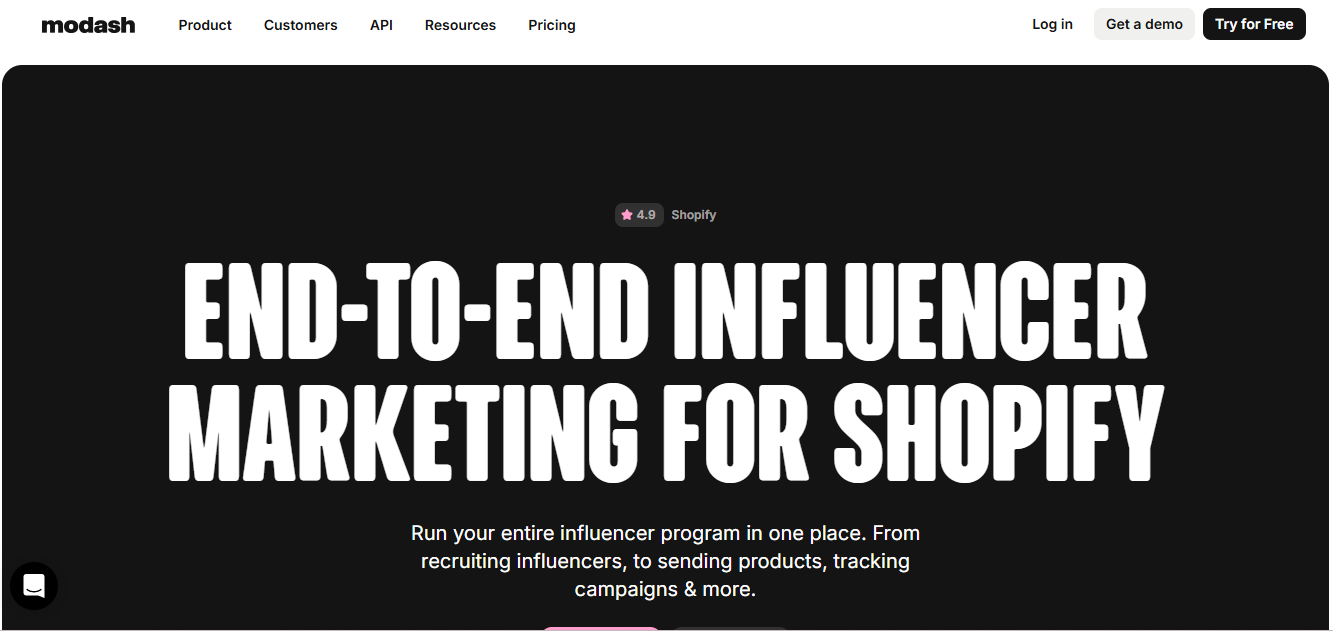
Best For: Modash is ideal for eCommerce brands looking to scale influencer and affiliate campaigns, particularly those on Shopify, by offering a comprehensive solution for influencer discovery, outreach, and campaign tracking.
Platform Coverage:
Pricing: There are different plans and options.
Reviews: 4.7/5 (G2)
Ease of Use (UX/UI): Users have praised Modash for its intuitive user interface, making it easy to navigate and quickly find influencers, especially with its powerful search filters. While some users mention that the platform's learning curve can be steep for beginners, once users familiarize themselves with the layout, it becomes easier to manage campaigns, outreach, and influencer payments.
Customer Support: Modash's customer support has received positive feedback, particularly in regard to their personalized approach, with dedicated account managers available for assistance. Users have noted that the onboarding process is well-structured, and they can easily reach out via email or WhatsApp for quick support.
Both Partnerize and Modash are powerful influencer marketing platforms, but they cater to different needs. Modash stands out for its AI-powered influencer discovery and seamless Shopify integration, making it perfect for brands looking to scale influencer campaigns efficiently, particularly in eCommerce. It excels in automation, offering bulk outreach, automated payments, and campaign tracking all in one platform.
However, Partnerize offers more comprehensive features, supporting a wide variety of partners (including affiliates, coupon partners, and more) and providing robust analytics and tracking across multiple currencies and regions. Partnerize's global scalability and advanced fraud protection make it ideal for large enterprises managing multi-region campaigns, but its pricing can be higher (starting around $2,000/month) compared to Modash's Essentials Plan at $199/month.
If you need custom commission models and advanced fraud protection, Partnerize is a solid choice. On the other hand, if you're an eCommerce brand focusing on Shopify integration and automated affiliate payouts, Modash offers an affordable and streamlined solution, especially with its AI discovery tool.

Best For: Captiv8 is best for enterprise and large-scale brands looking to manage complex influencer and affiliate campaigns, with advanced creator discovery, reporting, and storefront capabilities.
Platform Coverage:
Pricing: There are different pricing options:
Reviews: 4.1/5 (G2)
Ease of Use (UX/UI): Users mention that Captiv8’s platform is feature-rich but not always intuitive. The advanced filters, reporting, and collaboration tools are powerful but may take some time to learn. Many appreciate the ability to manage multiple campaigns and collaborators in one place, though smaller brands may find the dashboard overwhelming.
Customer Support: Feedback around Captiv8’s customer support is mixed to negative. While some users value the collaborative campaign tools, others report unresponsive support and ongoing account or payment issues. This is a recurring theme both from brands and creators, which impacts trust in the platform.
Captiv8 is heavily enterprise-focused with rigid pricing: $25K annually plus onboarding and $20–30K/month for storefronts and affiliates. By contrast, Partnerize offers more flexible pricing, with some brands starting at around $2,000/month, and models that can scale depending on performance or licensing fees.
Functionally, Captiv8 shines in influencer discovery, campaign collaboration, and reporting, but its weaknesses lie in support, payments, and integrations. Partnerize, on the other hand, provides a full partnership lifecycle platform—not just influencers but also affiliates, loyalty, coupon, and content partners—with strong global scalability, automated payouts, and fraud protection.
In short, choose Captiv8 if your brand’s focus is influencer marketing at scale with enterprise-level budgets, especially if storefronts and creator commerce are priorities. Choose Partnerize if you want a more versatile partnership platform with global payment automation, flexible commission structures, and scalable pricing models.

Best For: CreatorIQ is best for large and enterprise brands that need a trusted, end-to-end influencer marketing platform with deep integrations, real-time data, and robust reporting. It’s especially suited for companies running multi-platform global campaigns with high compliance and payment needs.
Platform Coverage:
Pricing: There are different plans:
Reviews: 4.7/5 (G2)
Ease of Use (UX/UI): Users note that CreatorIQ’s interface is clean, professional, and data-driven, but its depth means a slight learning curve. Once onboarded, most teams find the campaign creation flows and customizable dashboards intuitive. The platform’s shareable one-sheets and live reporting links are praised for simplifying stakeholder alignment.
Customer Support: CreatorIQ receives strong feedback for its hands-on support and strategic guidance. Clients highlight the value of having dedicated implementation managers and customer success teams who help with onboarding, campaign setup, and quarterly planning. The support is often described as “not just software, but expertise.”
CreatorIQ emphasizes influencer marketing excellence with strong API integrations, robust discovery filters, and built-in creator payments. Its pricing starts around $2K–$5K/month on annual contracts. Partnerize, on the other hand, is a broader partnership platform that manages not just influencers but also affiliates, loyalty, and coupon partners, with flexible pricing models starting near $2K/month and options for licensing or performance-based fees.
In terms of functionality, CreatorIQ is ideal if your brand’s priority is precise influencer discovery, campaign management, and compliance-ready payments. Partnerize is better if you need multi-partner coverage, global payout automation, and fraud protection at scale.
Choose CreatorIQ for influencer-first, content-rich campaigns with best-in-class data integrations, and choose Partnerize for brands needing an all-in-one partnership hub with affiliate depth and customizable commission structures.

Best For: HypeAuditor is best for brands and agencies focused on influencer discovery and campaign analytics, especially those that need fraud detection, audience authenticity, and flexible pricing options for influencer marketing campaigns.
Platform Coverage:
Pricing: HypeAuditor’s pricing is customizable, with the standard “Business” plan starting at around $10,000/year. Pricing can be adjusted based on the number of reports, active campaigns, and platform usage. They also offer a 24–48 hour free trial for new users.
Reviews: 4.6/5 (G2)
Ease of Use (UX/UI): Users find HypeAuditor’s dashboard straightforward for discovery and analytics, with intuitive filters and AI-driven search making it easy to identify influencers. However, beginners may find the platform overwhelming at first due to the breadth of metrics and campaign setup tools, requiring onboarding or training to maximize usage.
Customer Support: HypeAuditor provides responsive onboarding and setup support, with clients noting smooth implementation for custom packages. While the support team is generally seen as helpful, some reviews suggest that responses can slow down during high-volume times, especially for lower-tier clients.
HypeAuditor is primarily an influencer discovery and analytics platform, built around fraud detection, audience authenticity, and AI-powered search. Pricing is more modular and customizable, starting with a ~$10K/year Business plan. Partnerize, on the other hand, is a broad affiliate and partnership management platform that covers influencers, affiliates, coupons, and loyalty partners. Pricing starts closer to $2K/month, with flexible licensing or performance-based fees.
Functionally, HypeAuditor shines for brands that want granular influencer vetting, outreach, and ROI tracking tied to eCommerce, while Partnerize is stronger for companies looking to manage a wide variety of partnerships at scale with automation, fraud detection, and global payouts.
In short, choose HypeAuditor if influencer discovery, authenticity, and campaign ROI tracking are your top priorities. Choose Partnerize if your strategy requires managing diverse partner types with strong automation and multi-region scalability.

Best For: GRIN is best for DTC and eCommerce brands that want to run end-to-end influencer campaigns—covering discovery, gifting, contracts, affiliate tracking, payments, and UGC collection—in a single platform. It’s especially strong for brands with large product catalogs that want to tie influencer activity directly to sales.
Platform Coverage:
Pricing:
Reviews: 4.5 / 5.0 (G2)
Ease of Use (UX/UI): Users say GRIN’s platform is feature-rich and highly integrated with eCommerce workflows, which makes managing campaigns more efficient once set up. However, some report bugs, slow loading times, and unreliable search results that can disrupt the experience. The dashboard is comprehensive but can feel overwhelming for new users without onboarding.
Customer Support: Feedback on GRIN’s customer support is mixed. Many users find the account strategists and onboarding helpful, particularly for larger teams. But others have flagged delays in response times, unresolved tickets, and billing frustrations, especially when dealing with platform bugs or broken features.
GRIN is an influencer-first platform built for eCommerce brands, tightly integrating with Shopify, WooCommerce, and other storefronts to automate gifting, affiliate tracking, and ROI reporting. Its pricing typically starts at $2K–$2.5K/month with annual contracts, making it more predictable but less flexible.
Partnerize, in contrast, is a partnership lifecycle platform covering not just influencers but also affiliates, loyalty, and coupon partners. Pricing is custom/quote-based, often starting around $2K/month, with licensing or performance-based fee options.
In short, choose GRIN if your priority is eCommerce-driven influencer programs tied directly to sales, and choose Partnerize if you need a more comprehensive partnership platform that manages multiple partner types beyond influencers.
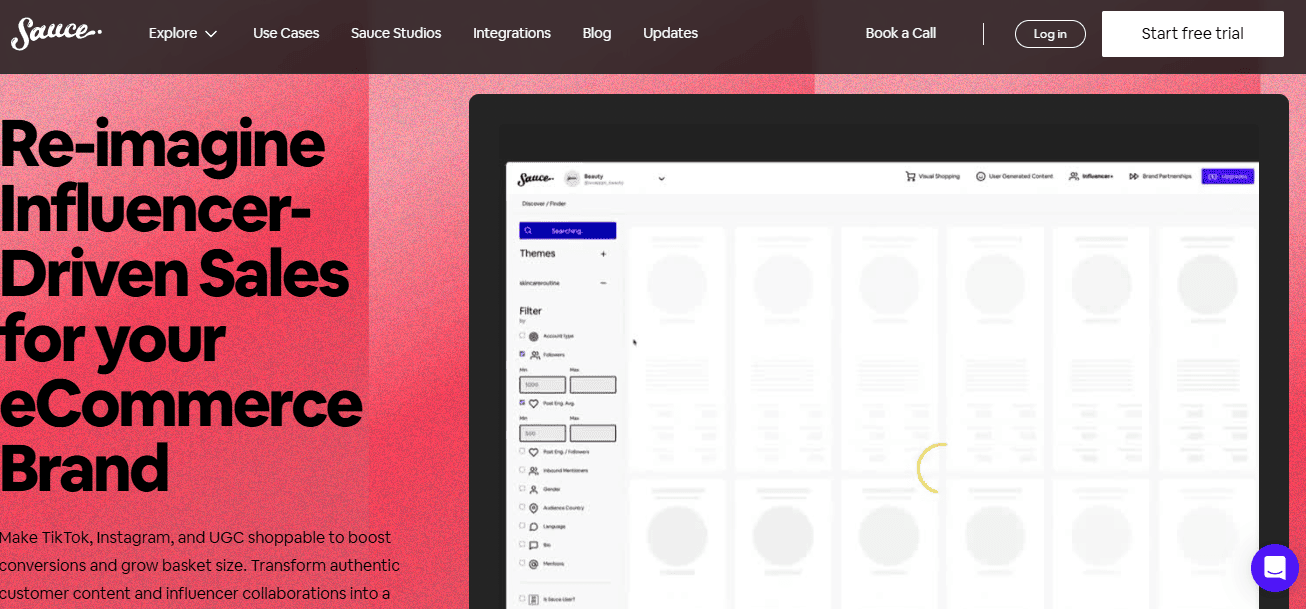
Best For: Sauce is best for eCommerce brands that want to turn influencer and UGC content into shoppable media. It’s ideal for Shopify, TikTok, and Instagram-driven stores that prioritize visual shopping galleries, video commerce, and social-driven conversions.
Platform Coverage:
Pricing: Based on our research, Sauce offers different plans. All plans include a 7-day free trial with the option to switch or cancel anytime.
Reviews: 4.6 / 5.0 (G2)
Ease of Use (UX/UI): Users consistently highlight Sauce’s zero-code setup and mobile-responsive galleries, which make embedding shoppable content into websites, email, or social simple and fast. The visual-first interface is intuitive for both merchants and shoppers, though some note it’s less of a traditional influencer CRM and more a conversion-focused tool.
Customer Support: Merchants rate Sauce’s support highly, noting responsive live chat and email support and helpful onboarding resources. The platform also offers a 7-day free trial across all plans, giving users the chance to test both features and support before committing.
Sauce is a social commerce platform—its core value lies in turning UGC and influencer posts into shoppable galleries and videos embedded into websites, emails, and social channels. Pricing is transparent and tiered (from $50/month to $600/month, with enterprise plans from $2,000/month) making it accessible to small and mid-sized brands.
Partnerize, by contrast, is a full partnership management platform that spans influencers, affiliates, coupon, and loyalty partners. It provides advanced tracking, fraud protection, and customizable commission structures for global campaigns. Pricing is custom/quote-based and generally starts around $2K/month, often with licensing or performance-based fees.
In short, choose Sauce if your focus is conversion-driven social commerce and making influencer/UGC content shoppable, especially on Shopify, TikTok, or Instagram. Choose Partnerize if you need a broader partnership hub with multi-region scalability, affiliate management, and automated payouts across many partner types.
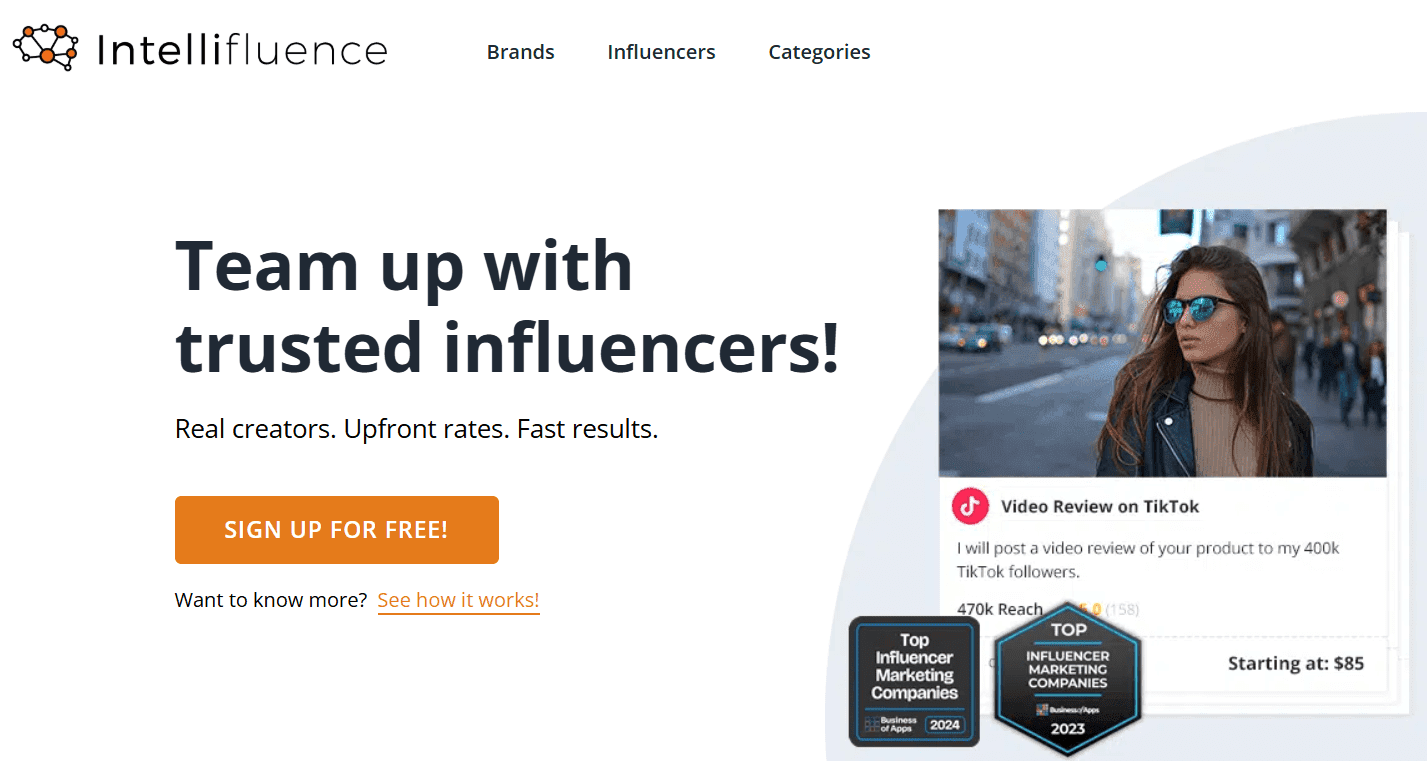
Best For: Intellifluence is best for brands of small to medium size looking for flexible, scalable influencer marketing solutions without long-term commitments. It's particularly useful for those working with micro- and nano-influencers, generating user-generated content (UGC), and testing campaigns across various platforms.
Platform Coverage:
Pricing: Based on our research, there are different options and pricings:
Reviews: 3.9/5.0 (G2).
Ease of Use (UX/UI): The platform is praised for its intuitive, clean dashboard and straightforward workflows. Users find it easy to manage campaigns and influencer communications, but some note occasional bugs and a slightly less smooth mobile experience compared to the web version.
Customer Support: Intellifluence has received positive reviews for its responsive customer support team, which provides helpful guidance, tutorials, and resources for beginners. However, some users have mentioned that campaign approvals and dispute resolution can occasionally take longer than expected.
Partnerize is a full-lifecycle platform that offers enterprise-level scalability, powerful tracking and analytics tools, and flexible commission structures. Its focus on automation and global multi-region support makes it ideal for large brands with complex affiliate and influencer programs. However, Partnerize's pricing is higher, typically starting at $2,000/month, which can be a barrier for smaller businesses.
On the other hand, Intellifluence is a more affordable option with transparent, tiered pricing starting at $0 for the free plan and scaling up based on campaign needs. It’s better suited for small to medium brands and those wanting to experiment with micro- and nano-influencers without long-term commitments. Intellifluence's major strength lies in its flexibility and ease of use, offering a simple, all-in-one platform for campaign management. However, its limited analytics and transaction fees may not suit brands needing deep data insights or those with large-scale campaigns.
For users looking for a scalable solution with advanced tracking, Partnerize may be the better choice, especially for large enterprises. For brands prioritizing affordability and ease of use, Intellifluence stands out as a strong alternative with no long-term contracts and flexible pricing options.

Best For: Upfluence is best for eCommerce brands on platforms like Shopify and Amazon that want to scale influencer and affiliate marketing campaigns. It offers an all-in-one solution, combining influencer discovery, outreach, and campaign management, along with strong integration with eCommerce platforms.
Platform Coverage:
Pricing:
Reviews: 4.5/5 (G2)
Ease of Use (UX/UI): Users generally find Upfluence's interface user-friendly but mention that the platform may take time to master, especially for beginners. While it is robust and feature-packed, the learning curve can be steep, particularly for those new to influencer marketing software. However, its well-organized structure and helpful tutorials ease the onboarding process.
Customer Support: Customer support for Upfluence is often praised for its responsiveness and the quality of the assistance provided. With dedicated account managers and a variety of support options, users feel well-supported. However, there have been some mentions that the complexity of the platform may occasionally require extended support, particularly for larger brands with specific needs.
While both Upfluence and Partnerize provide comprehensive solutions for influencer marketing, Upfluence stands out with its strong integration for eCommerce platforms like Shopify and Amazon, making it a solid choice for brands in retail and direct sales. The AI-powered influencer discovery and streamlined outreach automation through "Jace AI" add significant value to Upfluence's offering. However, it does come with a high cost, particularly for smaller brands, with annual commitments required.
On the other hand, Partnerize offers a more flexible, scalable solution suitable for larger brands and enterprises, offering multi-region support, advanced fraud protection, and customizable commission models. Partnerize excels with its real-time tracking and analytics, making it ideal for brands that need detailed performance insights. However, it is more complex to set up and has a higher entry cost, especially with its custom pricing based on business needs.
If you are a large enterprise or global brand, Partnerize is the better choice for robust tracking and management across multiple partner types. But for eCommerce-focused brands, Upfluence may be a more cost-effective, integrated solution with a focus on influencer discovery and outreach.
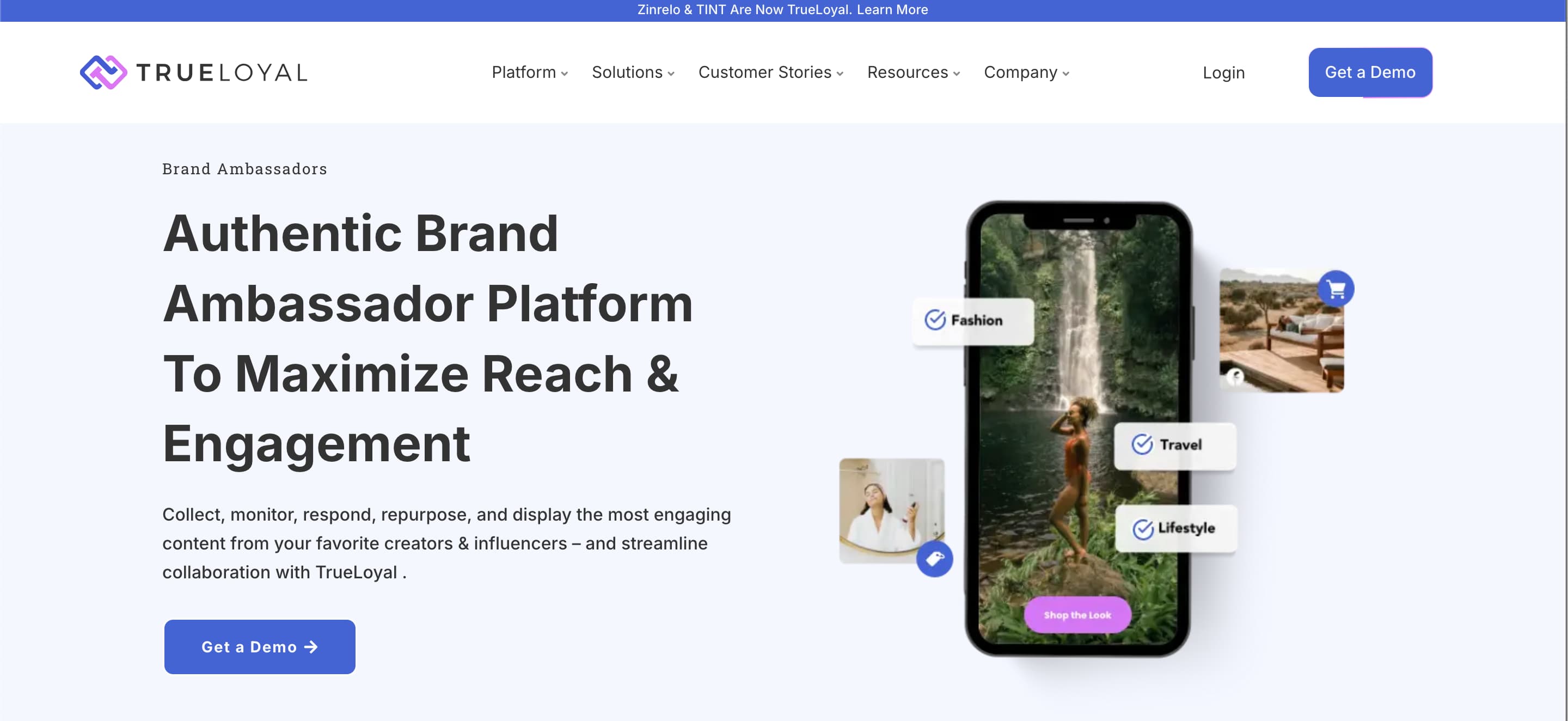
Best For: TrueLoyal is ideal for brands looking to streamline influencer and brand ambassador collaborations, particularly for eCommerce brands seeking to collect and repurpose user-generated content (UGC) for social proof and conversion optimization across platforms like Shopify and WooCommerce.
Platform Coverage:
Pricing: Undisclosed.
Reviews: 4.3 / 5.0 (G2)
Ease of Use (UX/UI): Users have noted that TrueLoyal's platform is designed to centralize content from creators, influencers, and customers, making collaboration seamless. The interface is user-friendly for teams handling influencer content, but some may initially find the learning curve steep due to the extensive feature set. Once familiarized, users find the platform’s experience to be highly efficient in managing influencer campaigns.
Customer Support: TrueLoyal’s customer support is praised for being responsive and hands-on, particularly through its strategists who provide personalized recommendations and help brands optimize their collaboration efforts. The support team also assists with onboarding and streamlining workflows, ensuring a smoother experience for brands looking to scale their influencer and UGC efforts.
Partnerize and TrueLoyal cater to different types of needs within influencer marketing. Partnerize excels in automated partner discovery, recruitment, and real-time analytics, making it ideal for larger enterprises with complex global programs. It also offers flexible commission models and customizable tracking options, but its steep learning curve and high pricing may deter smaller brands.
On the other hand, TrueLoyal focuses on streamlining collaboration with influencers and UGC management, which is perfect for brands looking to amplify authentic content and social proof. TrueLoyal is especially beneficial for eCommerce brands, offering tools to secure usage rights, add influencer content to product pages, and integrate with Shopify or WooCommerce.
If pricing transparency and self-service flexibility are important for your business, Partnerize might be more suitable, but if you want to optimize influencer collaboration and UGC content seamlessly, TrueLoyal offers the right features at potentially lower upfront costs.
When evaluating alternatives to Partnerize, it’s clear that the right choice depends on your brand’s priorities. Some platforms, like CreatorIQ, Captiv8, and GRIN, cater to enterprise and eCommerce brands needing full influencer workflows and ROI tracking. Others, such as HypeAuditor and Sauce, shine in discovery, fraud detection, or turning UGC into shoppable content. While Partnerize remains strong for managing multiple partner types and global affiliate programs, many brands may prefer specialized solutions that deliver more focused influencer and social commerce capabilities.
Among all these options, Influencer Hero stands out as one of the best all-around alternatives, offering influencer discovery, campaign management, analytics, and payments in one streamlined solution. If you’re ready to simplify your influencer marketing and scale your results, book a demo with Influencer Hero today and see how it can transform your campaigns.

Partnerize is a broad partnership platform, while most alternatives focus more heavily on influencer marketing, social commerce, or analytics.
Tools like Sauce or Influencer Hero are often better suited for growing eCommerce businesses due to flexible pricing and integrations with Shopify or WooCommerce.
Yes, but to varying degrees. Platforms like Partnerize and CreatorIQ are built for large-scale, multi-region campaigns, while smaller tools may focus more on local or niche markets.
Pricing varies widely: Influencer Hero and Sauce offer entry points for smaller budgets, while enterprise solutions like Captiv8 or CreatorIQ can run from $2K/month to $25K/year or more.
Yes, many do. GRIN, CreatorIQ, and Influencer Hero provide built-in payment solutions and contract management, while others may rely on third-party integrations.



Schedule a Demo with one of our media experts below.